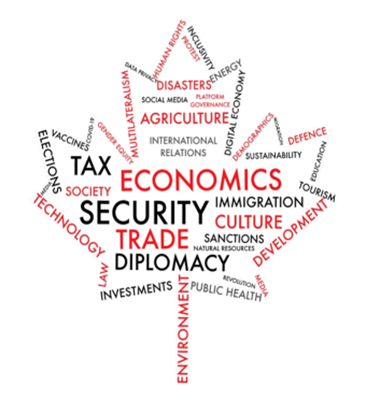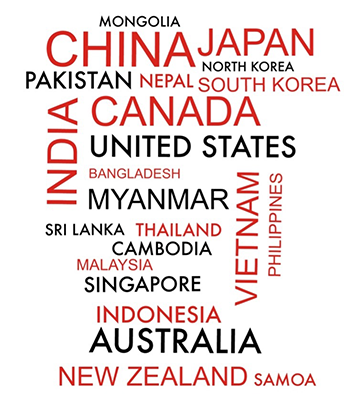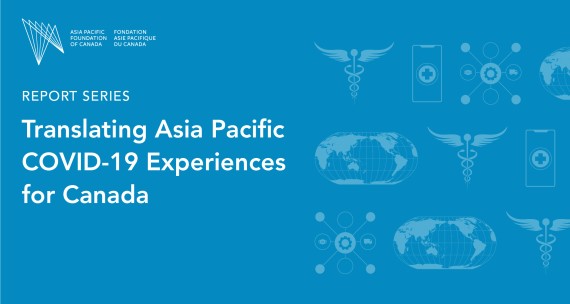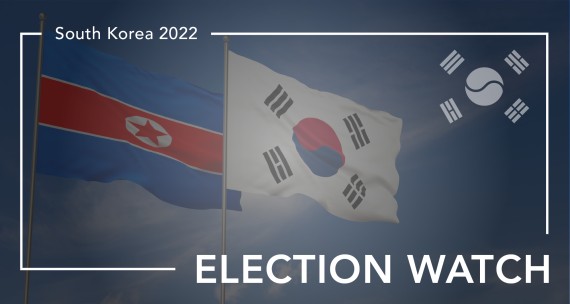This year to date has proven to be a dynamic period in the Asia Pacific and for Canada-Asia Pacific relations. APF Canada has tracked much of this dynamism in Asia Watch, our bi-weekly, uniquely Canadian analytical newsletter on trends, newsmakers, and events in the Asia Pacific.
Between January and August, APF Canada’s research analysts produced 65 issues of Asia Watch for a total of 260 stories. In total, we have produced 288 issues with 1,152 unique stories since launching Asia Watch in 2019. In this edition of Through the Eyes of Asia Watch, we recap eight trends and themes that caught our attention over the last eight months of Asia Watch in anticipation of another riveting fall season of coverage.


1. The Demise of Democracy
In late January, Asia Watch covered how electoral fraud allegations in Myanmar intensified after the National League of Democracy (NLD) won by a groundbreaking landslide. The military, also known as the Tatmadaw, allegedly found approximately 8.6 million cases of voter fraud. On February 1, 2021, the military seized power in a coup d'état and enforced a one-year state of emergency, replacing NLD members with new cabinet members. Since then, a nationwide protest movement has erupted, with numerous demonstrations in the streets and consumer boycotts against state-owned brands and industries. The military has responded with lethal crackdowns on peaceful protesters and internet censorship expansions while public sector employees have stopped reporting to work.
Meanwhile, anti-government protests have continued amid surges of COVID-19 in Thailand, Hong Kong’s National Security Law has been applied to ever-broadening cases, including the arrests of editors and executives of newspapers and people that have used pro-democracy slogans or booed the Chinese national anthem. In Malaysia, politicking and the pandemic have assailed democracy. The country declared a state of emergency in January amid a deteriorating COVID-19 situation. As Parliament was set to meet for the first time since the emergency in late July, Prime Minister Muhyiddin Yassin postponed the proceedings. This triggered a whirlwind of posturing among the opposition, the King, and the Prime Minister, leading to the resignation of the Prime Minister, increasing the monarch’s influence, and a return to power of a party that had previously ruled the country for decades.
2. Drifting Ties with China
Australia’s Foreign Relations Bill, which was passed in December of 2020, came into effect this year, adding another layer of complication in its deteriorating relations with China. The bill gives the Foreign Minister the ability to review and veto various agreements between Australia’s subnational organizations and foreign governments. Of note was Canberra’s decision in April to end four deals, including the state of Victoria's Belt and Road Initiative deal with China. Initially, the federal government opposed the subnational agreement, but Victoria continued to pursue the deal in hopes of fostering local economic growth and employment opportunities. In retaliation, China announced it would indefinitely suspend all economic activities with Australia under the China-Australia Strategic Dialogue, a series of talks intended to facilitate economic co-operation. Declining relations proceeded; in March, we reported how Chinese foreign direct investment (FDI) in Australia plunged 61% last year, a six-year record low in annual value.
Throughout 2021, Asia Watch analysts have also monitored the crackdowns in academic collaborations between China and other countries in the Asia Pacific. Concern over potential intellectual property theft has led countries in the Asia Pacific to halt or suspend academic collaboration with China. In late January, the United States Department of Justice drafted a proposal for a future amnesty program, which would allow academics to report foreign funding from past academic projects without punishment. The program was considered after the arrest of MIT engineering professor Dr. Gang Chen earlier in January, who allegedly failed to disclose financial affiliations with the Chinese government in a federal grant application. Strained academic ties between China and the U.S., the U.K., Canada, and Australia may further weaken bilateral relations, hinder research collaboration, and contribute to a continued shrinking number of Chinese students studying in these countries.
3. The Continuum of COVID-19's Doom
This year there was a notable transition from mask diplomacy to vaccine diplomacy in the Asia Pacific, while countries struggled with vaccine shortages and increasing COVID-19 cases. India’s vaccine rollout included providing millions of vaccine doses to various countries in South Asia as a tool of diplomacy. However, India’s plans changed after setting a global record for daily COVID-19 deaths from the Delta variant, mainly attributed to the Kumbh Mela festival and crowded election rallies, both of which attracted large crowds with minimal social distancing and mask-wearing. India struggled with managing the high rates of hospitalization cases while it suffered shortages of personal protective equipment, oxygen supply, and ventilators. Increased deaths also exacerbated the ongoing orphan crisis, where children were displaced from their homes and forced into vulnerable situations like slavery and trafficking.
Asia Watch analysts followed closely the unfolding of the 2021 Tokyo Olympics amid the pandemic. In mid-May, a poll revealed that 83 per cent of Japanese people supported the postponement or cancellation of the Olympics. The Japan Doctors Union advised against continuing with the Olympic Games, with warnings from the Union’s Chair of a potential “Olympic strain” of the virus. The potential of a massive economic setback from cancelling the event likely factored into Prime Minister Yoshihide Suga’s decision to move forward with the Games. Despite the Olympics proceeding with no spectators and a bubble around the athletes’ village, the seven-day average of COVID cases increased in August to more than 3,000 COVID-19 cases. With the pressure mounting on hospital workers, the government introduced a new policy to admit only critically ill COVID-19 patients.
4. Migrant Workers and Racism Against Ethnic Minorities
Migrant workers are the backbone of the agricultural, aquacultural, and caretaking industries throughout Asia. The pandemic has exposed their mistreatment, shedding light on how the lack of access to public health care and social security, long working hours, poor living conditions and low wages increase the likelihood of transmissibility for COVID-19. In Hong Kong, for example, health officials, politicians, and a prominent local media outlet faced widespread criticism for their discriminatory stances on ethnic minorities throughout the pandemic. Dark-skinned ethnic minorities took the bulk of the blame for the pandemic when they were described as a “high-risk group” and portrayed as more likely to spread COVID-19. Fearing outbreaks, foreign workers were targeted for mandatory testing in April and May, revealing only three positive cases out of 370,000 workers after hours of lining up on their days off for testing. Ethnic minorities and foreign workers have long served as targets of blame for Hong Kong’s problems and despite the low infection rates of foreign workers, politicians continued to perpetuate discriminatory stereotypes against darker-skinned ethnic minorities.
5. Regression in Women’s Rights
Asia Watch continued to report on the disproportionate impacts COVID-19 has had on women into 2021. The U.N. raised awareness about the shadow pandemic of increasing domestic abuse cases that are often neglected or hidden. UNESCAP’s report this year found a heightened demand for domestic support services after COVID-19 restrictions exposed women to increased domestic violence due to spending more time with abusive partners.
In many economies in Southeast Asia, women account for 70 per cent or more of the nurses, exposing them to increased risks of exposure to the virus that causes COVID-19. The Philippines is a leading exporter of nurses, the majority of which are women. In the first few months of the year, Manila took advantage of this situation, reducing them to a bargaining chip in a proposal to send nurses abroad in exchange for vaccines. Hospitals in the Philippines were also overwhelmed by the number of nurses resigning and moving to work abroad due to poor working conditions, unpaid benefits, and low wages.
Asia Watch also reported how women in Asia face significant gender pay gaps and how this is related to increased cases of abuse. For example, according to OECD data, South Korean women earn 33 per cent less than men. Gendered expectations for women to take on more housework combined with gender pay gaps can nudge women to leave the workforce at a higher rate than men. However, as women become more financially dependent on their spouses by leaving the workforce, it limits their chances of escaping abusive relationships.
6. Agriculture and Food Security
Agriculture and food issues have caused a stir across India and North Korea this year. In a bid to modernize India’s agricultural industry and boost its economic recovery, the Indian government introduced three bills that would allow farmers to sell their products outside of the State Agricultural Produce Market Committees (APMCs)-regulated markets. Traditionally, the Indian government has set guaranteed crop prices for farmers, providing farmers financial security for investing in the next farming cycle. However, many farmers have held mass protests as they predict that the bills will make them vulnerable to exploitation from large corporations as they will need to sell crops at market prices and will no longer be guaranteed government-controlled minimum prices for their crops. Meanwhile, Indian farmers have also received immense international support from members of the Indian diaspora, with demonstrations held in Canada, the U.S., Australia, and the U.K. The stakes are high in India for its agricultural reform, as 58 per cent of the 1.3 billion population is dependent on the agricultural industry as their primary income source.
Meanwhile, North Korea admitted earlier this year that it was facing a dire food shortage after having shut its borders during the pandemic. The United Nations Food and Agriculture Organization has warned that North Korea could experience “a harsh lean period between August and October 2021” if the country does not open up to trade or aid. It is feared that the North Korean people may undergo yet another ‘Arduous March,’ a reference to a famine in the 1990s where 10 per cent of the North Korean population starved to death.
7. Increased Vulnerability to Natural Disasters
Climate change has continued to fuel extreme weather events and highlight human vulnerability to natural disasters this year. For example, in April, Cyclone Seroja was the strongest cyclone ever recorded to hit Indonesia, killing more than 200 people and displacing thousands more. By 2050, the rising sea temperatures, rising sea levels, and climate change effects could destroy vast areas of the archipelago’s territory. In May, Cyclone Tauktae devastated India’s west coast amid the height of India’s second COVID-wave. Authorities raced to tackle COVID-19 outbreaks while fixing electricity grids, damaged infrastructure, and rescuing missing people. Meanwhile, Cyclone Yaas, which hit just days later, damaged around 300,000 homes and affected 10 million residents on India’s east coast. Millions of residents were evacuated from their homes before the cyclone hit and the West Bengal government set up 14,000 relief camps across the state in its largest-ever evacuation effort.
As climate change continues to devastate the world, the growth rate of the number of people displaced by extreme weather will exacerbate. Altogether, the impacts of extreme weather events displaced 55 million people from their homes in 2020, a new annual record and higher than the number of those displaced due to conflict and violence. China, the Philippines, Bangladesh, and India were the top four countries impacted. As extreme weather events continue to increase, it will be critical for countries to make plans to welcome climate refugees.
8. The Future is Green?
In a related course of inquiry, Asia Watch analysts have been following how countries in the Asia Pacific are gradually shifting towards a greener economy by boosting digital sectors and transitioning to renewable energy sources. This year, South Korea expanded on its C$128.5-billion Korean New Deal, including a road map to accelerate the adoption of green energy and infrastructure, by announcing that it would help developing countries speed up the transition to renewable energy by creating a C$6.3-million ‘Green New Deal’ fund. Japan’s Prime Minister Yoshihide Suga, meanwhile, pledged that Japan would go carbon neutral by 2050. In Japan’s transition to carbon neutrality, Toyota Motor, Panasonic, and Idemitsu Kosan plan to lead in applying for patents for solid-state batteries, a safer alternative to lithium-ion batteries. Solid-state batteries could speed up the transition to electric vehicles in the Asia Pacific. The Asian Development Bank also committed to helping reduce air pollution in the region when it pledged to invest in decommissioning coal-fired power plants. But many efforts to transition toward a greener future in the Asia Pacific have also highlighted how related projects can be detrimental to already vulnerable populations when they are not active participants in the processes.
Canada Amid the Chaos
Throughout 2021, Asia Watch has continued to monitor Asia Pacific pandemic-related challenges, actions, and outcomes with reference back to Canada’s ongoing public health challenges. As Asia Watch coverage so far this year has also shown, regional undercurrents continue to develop despite the pandemic.
Our Asia Watch analyses are helping solidify APF Canada’s role a critical commentator on the pandemic and Canada’s future health crisis planning and Canada-Asia relations in general. Stay tuned for more Asia Watch stories and analyses that will continue informing Canadian businesses, governments, and the public on current events in the Asia Pacific, strengthening our strategic engagement with this vital region.
With editing assistance from Quinton Huang, Junior Research Scholar, Engaging Asia, APF Canada.






